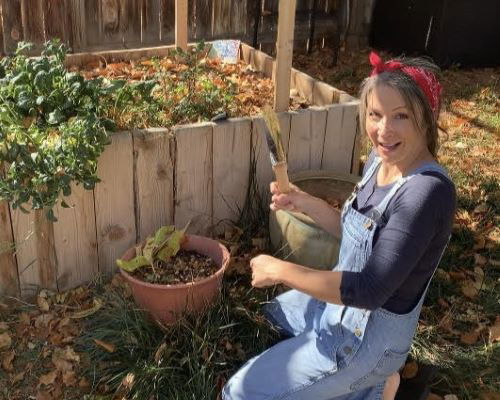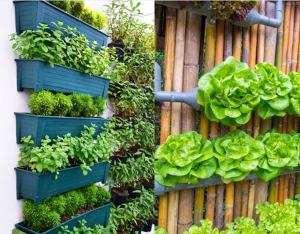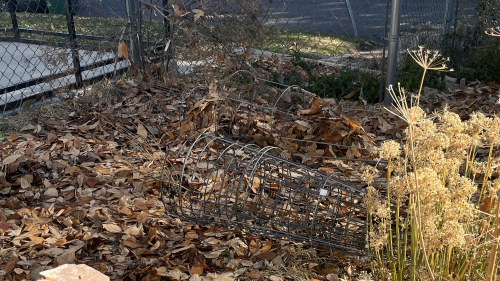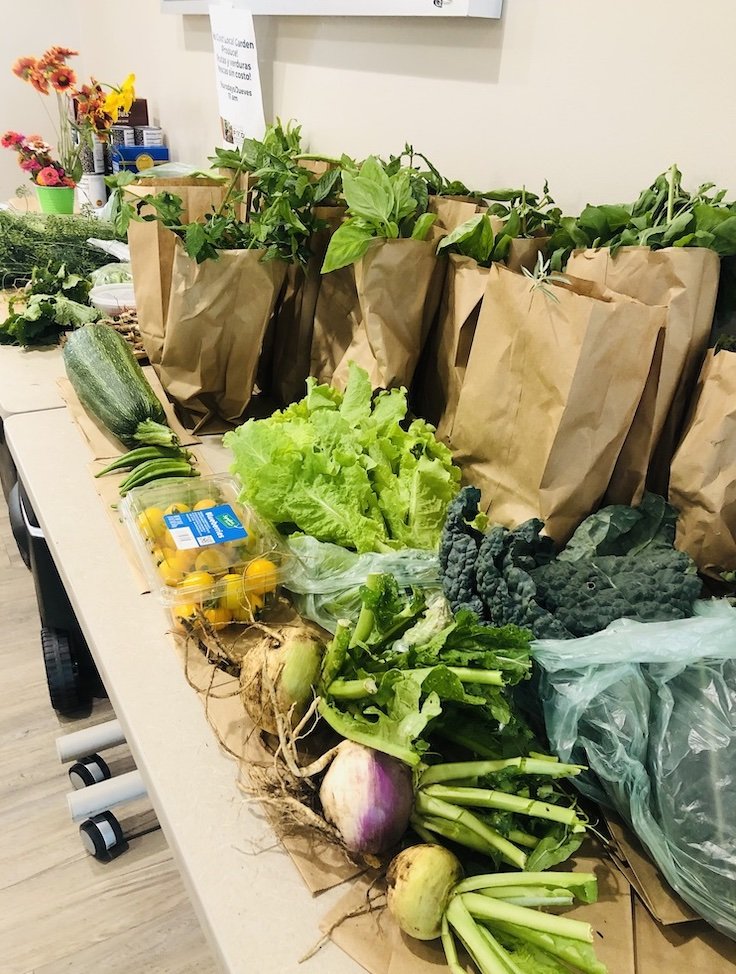The best berries to plant now for a sweet spring crop
Guest Contributor: Cassey Anderson, CSU Horticulture Agent
Extra produce to share? Get the app to support local hunger relief!

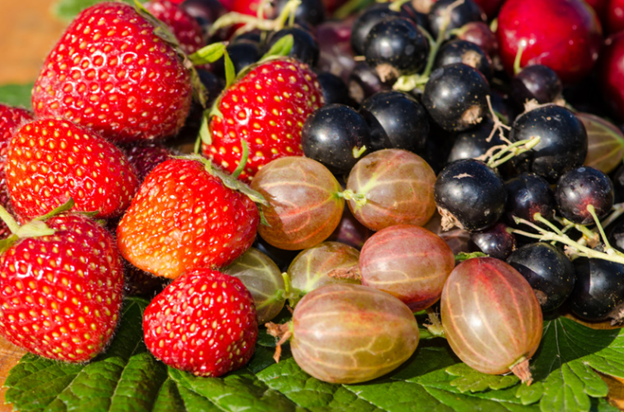
Small Fruits can be a reliable way to get fruits in your yard! If your goal is to have more food from your landscape small fruits are a great, aesthetic and more consistent source of fruits than many tree fruits. This is at least true in many parts of Colorado where erratic freezes can sound the death knell of a productive fruit season. Since small fruits bloom and begin to set fruit long after the risk of frost is past, they are not susceptible to unpredictable spring weather. Plus, you’re more likely to have good pollination as other plants have developed and can act as beacons for your small fruit pollination!
Unlike a vegetable garden which is primarily focused on annuals, a small fruit garden is managed over years, you may need to take mulching, pruning, trellising and more into consideration.
Tried and True
Strawberry
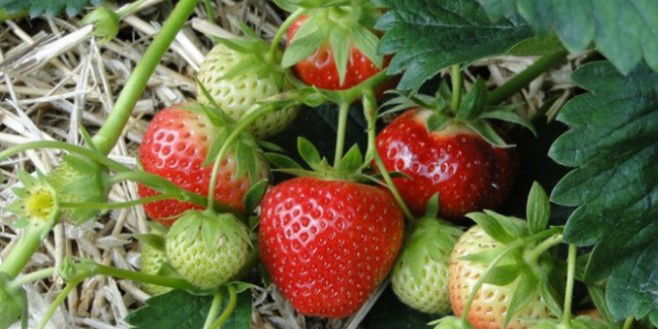
A perennial groundcover that spreads via stolon (adapted roots), strawberries can be challenging to establish but are very tough once established. If your soil is very heavy clay (i.e. slow drainage) you may want to build into a raised bed. Strawberries are most productive in their first 3-5 years, after that rouge them out and replace with “daughters” that have grown out from the original plant.
There are three main types of strawberries: June bearing, ever bearing, and day neutral.
• June Bearing cultivars have one large crop in early summer, larger fruit, and higher yields. Popular for freezing and jams with flavorful, aromatic berries.
• Everbearing have two crops, one in early summer and a second crop in the fall, tend to be more reliable than June bearing cultivars in cold climates, berries are smaller.
• Day Neutral flowers most of the summer and fall in cycles lasting around six weeks each, blossoming will slow or stop during hot weather, fruit is typically small, need consistent, light fertilization and regular removal of runners.
Mulching strawberries is very important. A straw or grass mulch will reduce soil temperatures and help to retain moisture. Plastic mulch can also be an option if weed pressures are high, or if you need to warm the soil. Strawberries will need about 1 pound of nitrogen per 1000 square feet each season, applied lightly and regularly through the season, or use a slow-release fertilizer.
Harvest regularly, at least every 2-3 days to reduce losses from pests and wildlife. If you expect to wait more than a few days (somehow) before eating or preserving, retain the “cap” on the fruit, if eating quickly you can leave the caps with the plant.
Winter care - in cold climates you want to ensure strawberries do not get frosted at the root level. Mulch deeply (you can almost cover the plants in dry areas) with a weed-free straw. If snow coverage is expected for most of the season you can reduce the mulch. Leave the mulch until you start to see growth the following spring.
Raspberry/Blackberry

There are two main types of raspberry and blackberry canes: primocane and floricane. The easiest, although slightly less productive one is the floricane type, or fall-bearing. These types produce fruit on the first-year canes but not until late summer into fall. Primocane types produce fruit earlier in the season but on second-year canes. This means you must keep canes for two years before seeing fruit. In areas with dry or windy winters primocane types can be less productive. In winter, once you’ve had a deep freeze (below 28 F) you can prune ALL canes down for primocane types, and all second-year canes for the floricane type.
Canes can benefit from mulching in to preserve moisture, regular irrigation during dry spells, and access to abundant pollinators to ensure good fruit pollination. Typically, they will need at least 1” of moisture each week, more if it gets hot and dry. It’s also good to give them some fertilizer, around 1-1.5 pounds of nitrogen per 1,000 square feet, this can be applied with a slow-release fertilizer early in the season as canes are beginning to develop or can be spread over the season until flowers begin to develop.
Trellising – canes will likely need support unless you want to harvest by crawling on the ground. Trellis systems can be complex or as simple as a t-post with wire wrapped around it to provide support as the canes grow.
Pests – one of the big pests in cane crops is the spotted wing drosophila, a small fly that lays its eggs to develop in the fruit. Management can be as simple as daily picking but can also include trapping and scouting.
Grapes
Grapes can be a good ornamental feature of your landscape and supplement to your pantry (or for donation!). To ensure success there are so key points to follow. Grapes do not tolerate shade well, so they need an area with full sun. If you plan to have mor than one plant, you’ll need to space them 6-8 feet apart. Grapes are best planted in the spring, there is insufficient time in the fall to allow them to establish before the cold of winter.
Trellising - Grapes cannot grow without a strong trellis system. You can go basic with posts and wire (12 gauge or heaver), use a strong fence, or even grow on a pergola. If you plan to grow on a pergola, one plant is likely adequate.
Pruning - Grapes require thorough pruning to be the most productive. There are many different pruning strategies, but that’s beyond the scope of what we can get into here today. A grape vine, left unpruned, will still produce but it may not produce as well as one that has been carefully managed, or may produce in less convenient parts of the plant. Remember that dormant buds on last year’s canes produce new canes that grow the grape cluster, so you need some established cane to produce new growth.
Blueberries
What about blueberries? I’m not going to get into blueberries now as they are out of my wheelhouse since they do not tolerate the alkaline soils of the west. However, if you’re fortunate enough to live in an area with acidic soils (a pH of 6 or lower) you can look into blueberries! Contact your local Extension office for more info!
Less common, but awesome
Gooseberry, Currant, Jostaberry

Dual purpose: ornamental and food! These can be very productive when planted in a mostly sunny (can tolerate some shade), well-drained soils with good organic matter or supplemental nutrition. Use mulch to keep soils temperatures cool.
Gooseberries and currants can be used for pies, jams, or other preserves, they tend to be tart. The Jostaberry is a hybrid between gooseberry and black currants.
These shrubs are most productive on their second and third year wood, so prune out canes after the third season. Ideally a bush should have 1/3 new canes, 1/3 two year old canes, 1/3 3 year old canes.
Elderberry
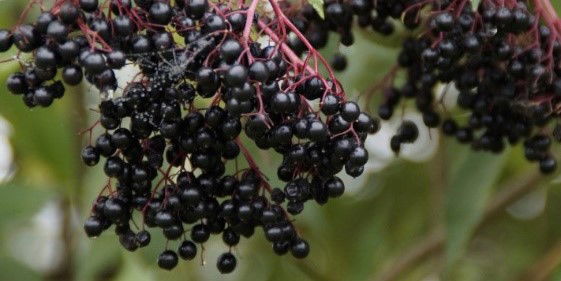
A much larger shrub, can almost be a tree in size in some situations, can be in partial shade as well. Be sure to purchase varieties grown for their fruit productivity. Berries should not be picked until fully ripe, sort out any that have not ripened completely. Do note, these cannot be canned safely as they are so acidic that food-safe preservation can be challenging. Can be pruned out by removing 1/3 of the largest canes every few years to allow continued new growth.
Serviceberry

Also called saskatoon berry or Juneberry is another in the shrub/tree category serviceberry is one that I would love to see in more landscapes as it has aesthetic characteristics all year round. 12-20 feet tall depending on variety it has beautiful spring blooms, summer fruit, and many have orange or red fall color, so this can check a lot of boxes for smaller landscapes. For best productivity it does need full sun and to avoid wet soils.
There are many more small fruit varieties that are even more niche, but these are typically easy to find and can reward you with years of tasty harvests for your home and for donation!
As always, reach out to your local Extension office with additional questions and for further resources. Happy Gardening!
Gardening in Colorado? Check out Grow & Give www.growandgivecolorado.org and in particular our Colorado Vegetable Guide https://growgive.extension.colostate.edu/colorado-vegetable-guide/ for more crop information on all of the above plants.
What if every gardener shared just a little?
One small donation can have a tremendous impact. Just imagine, if every gardener planted one extra plant to share, or donated just a pound from the garden. Collectively, we would have an abundant source of fresh, healthy produce available to be distributed to families experiencing food insecurity in our own communities! The free Fresh Food Connect mobile app connects you to a local hunger relief program, then manages and tracks your donations of homegrown produce throughout the season. Download the app today!
